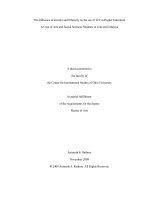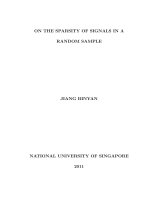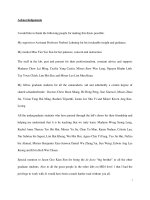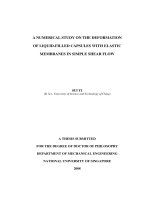A Modern Treatise on the Principle of Legality in Criminal Law doc
Bạn đang xem bản rút gọn của tài liệu. Xem và tải ngay bản đầy đủ của tài liệu tại đây (1.23 MB, 214 trang )
A Modern Treatise on the Principle of Legality
in Criminal Law
.
Gabriel Hallevy
A Modern Treatise
on the Principle of Legality
in Criminal Law
Assoc.Prof. Gabriel Hallevy
ISBN 978-3-642-13713-6 e-ISBN 978-3-642-13714-3
DOI 10.1007/978-3-642-13714-3
Springer Heidelberg Dordrecht London New York
Library of Congress Control Number: 2010935595
# Springer-Verlag Berlin Heidelberg 2010
This work is subject to copyright. All rights are reserved, whether the whole or part of the material is
concerned, specifically the rights of translation, reprinting, reuse of illustrations, recitation, broadcasting,
reproduction on microfilm or in any other way, and storage in data banks. Duplication of this publication
or parts thereof is permitted only under the provisions of the German Copyright Law of September 9,
1965, in its current version, and permission for use must always be obtained from Springer. Violations
are liable to prosecution under the German Copyright Law.
The use of general descriptive names, registered names, trademarks, etc. in this publication does not imply,
even in the absence of a specific statement, that such names are exempt from the relevant protective
laws and regulations and therefore free for general use.
Cover design: WMXDesign GmbH, Heidelberg, Germany
Printed on acid-free paper
Springer is part of Springer Science+Business Media (www.springer.com)
To my wife and daughters.
.
But the Lord saw that the wickedness of humankind had become great on the earth. Every
inclination of the thoughts of their minds was only evil all the time. The Lord regretted that
he had made humankind on the earth, and he was highly offended. So the Lord said, “I will
wipe humankind, whom I have created, from the face of the earth – everything from
humankind to animals, including creatures that move on the ground and birds of the air,
for I regret that I have made them”.
Genesis 6:5-7
.
Preface
The present book is based on the lectures delivered by the author in the past few
years as part of the Criminal Law course of the Faculty of Law at the Ono Academic
College. There has been little research on the principle of legality in modern
criminal law, although this is one of the most ancient legal principles of human
society. In recent generations there have been several attempts to define the
principle conclusively, but only with regard to some of its aspects. No comprehen-
sive definition of the principle of legality has been attempted to date.
A conclusive definition of the principle of legality in criminal law requires both
an accurate inward-looking definition of the principle itself, and an outward-look-
ing treatment of its relation with criminal law theory. Only a coherent theory that
includes the princi ple of legality as an integral part of criminal law theory can do
justice to the principle of legality. This view is consistent with the scientific concept
of law, which regards the law as part of science.
A Modern Treatise on the Principle of Legality in Criminal Law is therefore a
scientific treatise on one of the four principles of the criminal law. The present
treatise is divided into six parts, according to the scientific understanding of the
principle of legality in criminal law. Chapter 1 explores the relation between the
principle of legalit y and the general theory of criminal law in the context of the
structure and the development of the principle of legality in human society. This
chapter outlines the four secondary principles of the principle of legality, and
describes them in general terms.
Chapters 2–5 discuss in detail each of the four secondary principles of the
principle of legality. Chapter 2 discusses the legitimate sources of the criminal
norm, Chap. 3 discusses the applicability of the criminal norm in time, Chap. 4
discusses the applicability of the criminal norm in place and Chap. 5 discusses the
interpretation of the criminal norm. Each of the four chapters concludes with a
discussion of the conflict of laws issues relevant to the secondary principle under
investigation. Finally, Chap. 6 addresses the problem of the conflict of laws within
the conflicts of laws and rounds out the discussion.
ix
I wish to thank Ono Academic College for supporting this project, and especially
Dean of the faculty of law and vice chairman Dudi Schwartz for his staunch support
on so many important occasions. I thank Gabriel Lanyi for his comments and Anke
Seyfried of Springer Heidelberg for guiding the publication of the book from its
inception to its conclusion. Finally, I wish to thank my wife and daughters for the
helpful discussions and support they offered along the way.
Kiryat Ono, June 2010 Gabriel Hallevy
x Preface
Contents
1 The Meaning and Structure of the Principle of Legality
in Criminal Law 1
1.1 The Role of the Principle of Legality in the Criminal
Law Theory 1
1.1.1 The Basic Structure of Crimi nal Law Theory 1
1.1.2 The Basic Structure of the Principle of Legality
in Criminal Law 5
1.2 Development of the Principle of Legality in Criminal Law
and Its Modern Justifications 8
2 The Legitimate Sources of the Crim inal Norm 15
2.1 The Structure of the Criminal Norm and Its Identification 16
2.1.1 Valid Conditional Clauses 16
2.1.2 Criminal Sanction 17
2.1.3 Classification of Offences Based on Content 18
2.2 The Legal Sources of the Criminal Norm 20
2.2.1 General Principles 20
2.2.2 Legal Sources 33
2.3 Conflict of Laws Based on Legitimate Sources
of the Criminal Norm 46
3 Applicability of the Criminal Norm in Time 49
3.1 Basic Distinctions 49
3.1.1 Distinction Between Procedural and Substantive
Criminal Norms 50
3.1.2 Distinction Between Relevant Points in Time 51
3.1.3 Distinction Between Continuous, Temporary,
and Fragmented Criminal Norms 55
3.1.4 Distinction Between Mitigating and Aggravating
Criminal Norms 56
xi
3.2 Applicability of the Procedural Criminal Norm in Time 58
3.2.1 The General Rule 58
3.2.2 Application of the Rule 61
3.3 Applicability in Time of the Substantive Criminal Norm 67
3.3.1 The General Rule 67
3.3.2 Application of the Rule 71
3.4 Conflict of Laws Based on Applicability of the Criminal
Norm in Time 78
4 The Applicability of the Criminal Norm in Place 81
4.1 The Basic Distinctions 81
4.1.1 Distinction Between Applicability and Jurisdiction
in Criminal Law 82
4.1.2 Distinction Between Procedural and Substantive Criminal
Norms in Different Legal Systems 83
4.1.3 Distinction Between Domestic and Foreign Criminal
Norms and Criminal Events 86
4.1.4 Distinction Between Locally Restricted
and Not Restricted Criminal Nor ms . . . 89
4.1.5 Distinction Between the Relevant Factors Connecting
the Criminal Event with the Criminal Norm 90
4.2 Applicability of the Procedural Criminal Norm in Place 92
4.2.1 The General Rule 92
4.2.2 Application of the Rule 95
4.3 Applicability of the Substant ive Criminal Norm in Place 97
4.3.1 The General Rule 97
4.3.2 The Territorial Application of the General Rule 100
4.3.3 Extraterritorial Application of the General Rule 118
4.4 Conflict of Laws Based on the Applicability of the Criminal
Norm in Place 129
4.4.1 The General Rule 129
4.4.2 International Cooperation and the Extraterritorial
Vicarious Applicability 131
5 Interpretation of the Criminal Norm 133
5.1 Structure of Interpretation of the Criminal Norm 133
5.2 Rules of Formulation of the Criminal Norm . 135
5.2.1 Generality 135
5.2.2 Feasibility 137
5.2.3 Clarity and Precision 138
5.2.4 Relevance of Non-Criminal Norms 141
5.3 Rules of Application of the Criminal Norm . . 143
5.3.1 Applicability of the General Prin ciples of Criminal Law 144
5.3.2 Specific and General Criminal Norms . 145
xii Contents
5.3.3 Analogy 147
5.3.4 Strict and Purposive Interpretations . . . 149
5.3.5 Assisting Legal Meas ures for Revealing the Legal
Logic (Ratio Legis) Through the Purposive
Interpretation 152
5.3.6 Mitigating Interpretation 160
5.4 Conflict of Laws Based on the Interpretation
of the Criminal Norm 163
6 The Conflict of Laws Within the Conflicts of Laws
in the Principle of Legality 165
Cases 169
Anglo-American Cases 169
German Cases 184
European Cases 186
International Cases 187
Bibliography 189
Index 197
Contents xiii
.
List of Figures
Fig. 1.1 The structure of scientific legal theory . . . . . . . . . 3
Fig. 1.2 The structure of criminal law theory . . . . . . . . . . . 6
Fig. 1.3 The basic structure of the principle of legality
in criminal law . . . . . 7
Fig. 3.1 First possible relation between relevant points in time . . . . . 54
Fig. 3.2 Second possible relation between relevant points in time . . 54
Fig. 3.3 Third possible relation between relevant points in time . . . . 54
Fig. 3.4 Fourth possible relation between relevant points in time . . 54
Fig. 3.5 Fifth possible relation between relevant points in time 54
Fig. 3.6 Sixth possible relation between relevant points in time . . . . . 55
Fig. 3.7 The applicability of the procedural criminal norm in time
in the first possible time relation between relevant points
in time . 62
Fig. 3.8 The applicability of the procedural criminal norm in time
in the second possible time relation between relevant
points in time . . . . . . . 63
Fig. 3.9 The applicability of the procedural criminal norm in time
in the third possible time relation between relevant points
in time . 63
Fig. 3.10 The applicability of the procedural criminal norm in
time in the fourth possible time relation between relevant
points in time . . . . . . . 64
Fig. 3.11 The applicability of the procedural criminal norm in time
in the fifth possible time relation between relevant points
in time . 65
Fig. 3.12 The applicability of the procedural criminal norm in time
in the sixth possible time relation between relevant points
in time . 66
xv
Fig. 3.13 Applicability of the substantive criminal norm in time
in the first possible relation between relevant points
in time . 72
Fig. 3.14 Applicability of the substantive criminal norm in time
in the second possible relation between relevant points
in time . 73
Fig. 3.15 Applicability of the substantive criminal norm in time
in the third possible relation between relevant points
in time . 74
Fig. 3.16 Applicability of the substantive criminal norm in time
in the fourth possible relation between relevant points
in time . 75
Fig. 3.17 Applicability of the substantive criminal norm
in time in the fifth possible relation between relevant
points in time . . . . . . . 76
Fig. 3.18 Applicability of the substantive criminal norm in time
in the sixth possible relation between relevant points
in time . 78
Fig. 4.1 The legal process of matching the applicable norm . 91
Fig. 5.1 Structure of interpretation of the criminal norm . . . . . . . 134
Fig. 5.2 The general structure of the interpretation of the criminal
norm ex post 144
Fig. 5.3 The logical mechanism of analogy 149
Fig. 5.4 Three stages of the interpretation . 162
Fig. 6.1 The structure of the conflict of laws within the conflicts
of laws . 166
xvi List of Figures
List of Tables
Table 4.1 Applicability in place of domestic and forei gn norms
to domestic and foreign events . . . . 88
Table 4.2 Applicability in place of domestic and forei gn procedural
criminal norms to the domestic and foreign events 95
xvii
.
Chapter 1
The Meaning and Structure of the Principle
of Legality in Criminal Law
Contents
1.1 The Role of the Principle of Legality in the Criminal Law Theory . . . . . . . . . 1
1.1.1 The Basic Structure of Criminal Law Theory . . . . . . . . . . . . . . . . . . . . 1
1.1.2 The Basic Structure of the Principle of Legality in Criminal Law . . . . . . . . 5
1.2 Development of the Principle of Legality in Criminal Law
and Its Modern Justifications . . . . . . . . . . . . . . . . . . . . . . . . . . . . . . . 8
1.1 The Role of the Principle of Legality in the Criminal
Law Theory
1.1.1 The Basic Structure of Criminal Law Theory
Criminal law is part of the scientific sphere called “law,” or the legal science.
Therefore, criminal law is a scientific sphere. In the past, in the Anglo-American
legal systems, there was a conceptual difficulty in classifying law as a science
because of its development through case-laws, which made use of the praxis of
binding precedents ( stare decisis). This attitude matched the general scientific
development in Anglo-American countries, which was casuistic. By contrast, the
European-Continental legal systems considered law to be a science,
1
and therefore
in Europe it was necessary to study at the university to become a jurist. In the first
university in Europe, the University of Bologna, law was one of the scientific
1
For the development of the law as science in the Middle Ages and afterwards in Europe see
Harold J. Berman and Charles J. Reid Jr., Roman Law in Europe and the Jus Commune: A
Historical Overview with Emphasis on the New Legal Science of the Sixteenth Century,20
SYR-
ACUSE J. INT’L L. & COM.
1 (1994).
G. Hallevy, A Modern Treatise on the Principle of Legality in Criminal Law,
DOI 10.1007/978-3-642-13714-3_1,
#
Springer-Verlag Berlin Heidelberg 2010
1
subjects being studied.
2
The Faculty of Law of Bologna played a crucial role in the
development of law in the Middle Ages (jus commune).
3
In the modern era there seems to be no controversy that the law represents indeed
a scientific sphere.
4
The law should therefore develop through legal research, using
the relevant research methodologies, some of which are unique to this particular
scientific sphere. This is also the reason for placing the legal stud ies in the acade-
mia.
5
If the law is as science and requires a scientific methodology, it is necessary to
create a single scientific theory that governs the law. This is a fundamental
endeavor in every science, including the law. Such a theory must meet two
requirements: it must describe accurately all relevant events without usin g any
random elements and it must predict accurately all relevant future events.
6
The emergence of such a new theory is not always simple. The primary theory
appears to be inconclusive after some time, and exceptions arise that the theory
cannot explain. As a result, amendments or changes are int roduced in the primary
theory to account for the exceptions. When the theory can no longer explain the
exceptions, it is replaced by a new one. The new theory may also turn out to be
inconclusive, and must therefore be amended, changed, or replaced.
7
Legal theory is developing in the same way. A single legal theory that would
clarify all relevant legal issues would not be restricted to specific legal areas. In the
context of this book, however, the theory is restricted to criminal law, therefore the
theory under consideration is Criminal Law Theory. The need for such a theory in
criminal law is crucial. The large number of doctrines, legal norms, exceptions, and
exceptions to the exceptions muddied the waters of criminal law, which have
become vague and unclear. The single theory of criminal law, which organizes
all of criminal law and speaks with one coherent voice, is about legal social
control. Society controls the individuals through criminal law, and therefore the
2
University of Bologna was established in 1088 AD, and it is considered as the first university in
Europe. For the development of the law as science in the European universities see
HASTINGS
RASHDALL, THE UNIVERSITIES OF EUROPE IN THE MIDDLE AGES
135 (1935).
3
JOHN HENRY MERRYMAN, THE CIVIL LAW TRADITION: AN INTRODUCTION TO THE LEGAL SYSTEMS OF WESTERN
EUROPE AND LATIN AMERICA 7–14, 27–34 (1969).
4
W. D. Lewis, The Law of England Considered as a Science,10L. REV. & Q. J. BRIT. & FOREIGN
JURISPRUDENCE
23 (1849); George W. Goble, Law as a Science,9IND. L. J. 294 (1934); John D.
Appel, Law as a Social Science in the Undergraduate Curriculum,10
J. LEGAL EDUC. 485 (1958);
John J. Bonsignore, Law as a Hard Science: On the Madness in Method, 2 ALSA F. 49 (1977);
Marcia Speziale, Langdell’s Concept of Law as Science: The Beginning of Anti-Formalism in
American Legal Theory,5
VT. L. REV. 1 (1980); Lynn R. Campbell, Law as a Social Science,9
DALHOUSIE L. J. 404 (1984); David L. Faigman, To Have and Have Not: Assessing the Value of Social
Science to the Law as Science and Policy,38
EMORY L. J. 1005 (1989).
5
George L. Priest, Social Science: Theory and Legal Education: The Law School As University,33
J. LEGAL EDUC. 437 (1983); Mark Warren Bailey, Early Legal Education in the United States:
Natural Law Theory and Law as a Moral Science,48
J. LEGAL EDUC. 311 (1998).
6
STEPHEN W. HAWKING, A BRIEF HISTORY OF TIME 18 (1989).
7
Ibid, at pp. 19–22, 147–160.
2 1 The Meaning and Structure of the Principle of Legality in Criminal Law
justifications of criminal law theory must be based on social approaches and
explanations.
A scientific theory has various levels of application. The levels are hierarchical,
with lower leve ls subordinated to the higher ones. The highest level represents the
essence of the theory, generalized into a supra-principle. This supra-principle is the
core of the theory, and all other levels are subordinated to it. Exceptions at this level
require replacing the entire theory. From the supra-principle derive the fundamental
principles that break down the supra-principle into basic lega l principles, which in
turn guide the application of the supra-principle. From each fundamental principle
derive secondary principles. It is the secondary principles that create the legal form
of the concrete application of the fundamental principles. From each secondary
principle derive specific legal provisions that make the secondary principles appli-
cable to specific events.
Figure 1.1 shows a schematic description of this four-level structure.
According to this structure, specific legal provisions cannot contradict secondary
principles, secondary principles cannot contradict fundamental principles, and
fundamental principles cannot contradict the supra-principle. This structure func-
tions as a template, which is then filled with content relevant to criminal law theory.
The supra-principle of criminal law theory is the principle of free choice.
According to the supra-principle, no criminal liability can be imposed on an
individual unless the individual has chosen to commit a criminal offense. When
an individual is compelled to commit an offense, imposing criminal liability is not
considered to be justified. The individual autonomy of the human being is the social
concept behind the supra-principle.
8
To function as the supra-principle of criminal
Supra-principle
Secondary Principles
Fundamental Principles
Specific Legal Provisions
Fig. 1.1 The structure of
scientific legal theory
8
ANDREW ASHWORTH, PRINCIPLES OF CRIMINAL LAW 25–28 (5th ed., 2006); ANTHONY JOHN PATRICK KENNY,
FREEWILL AND RESPONSIBILITY (1978)
; HERBERT L. A. HART, PUNISHMENT AND RESPONSIBILITY: ESSAYS IN THE
PHILOSOPHY OF LAW
ch. 6 (1968).
1.1 The Role of the Principle of Legality in the Criminal Law Theory 3
law theory, the free choice must be well defined. Although free choice may seem to
be related to the modern political philosophy of the eighteenth century, its origins
reach back to the dawn of humanity.
9
When certain regimes rejected the free choice
concept, they were considered to be ille gitimate.
The principle of free choice negates determinism. The basic assumption of free
choice is that free choice is possible. Deterministic concepts, which regard
individual behavior to be dominated by external forces, negate the principle of
free choice.
10
Determinism may be relative. Under certain circumstances, when an
object falls from an individual’s hand, the path of the obje ct may not be under the
individual’s control, but causing the object fall may be.
From the supra-principle derive the fundamental principles. In criminal law
theory there are four fundamental principles:
(1) The principle of legality
(2) The principle of conduct
(3) The principle of culpability
(4) The principle of personal liability
The supra-principle of free choice refers to the individual’s choice between
permitted and forbidden behavior. To enable free choice it is necessary to draw
accurately the borderline between “permitted” and “forbidden.” The rules of
formation of what is “permitted” and “forbidden” are embodied in the first funda-
mental principle of criminal law theory, the principle of legality. When an
individual chooses to commit a forbidden act, the act must be physically carried
out to duly enable the imposition of criminal liability.
The rules of formation of the physical appearance of free choice are embodied in
the second fundamental principle of criminal law theory, the principle of conduct,
the objective expression of free choice.
Exercise of an individual’s free choice requires certain mental positions in the
individual’s mind, including both positive and negative aspects. The positive
aspects are embodied in the mental elements of the offense, the negative aspects
in the general defenses.
11
Thus, an offense may require specific intent in order to
impose criminal liability — a positive aspect (mental element). When the
9
RONALD DWORKIN, TAKING RIGHTS SERIOUSLY 180 (1977); JOSEPH RAZ, THE MORALITY OF FREEDOM 425 (1986);
Barbara Hudson, Pushing the Poor: a Critique of the Dominance of Legal Reasoning in Penal
Policy and Practice,
PENAL THEORY AND PRACTICE 302 (Robin Antony Duff ed., 1994); RONALD DWORKIN, A
MATTER OF PRINCIPLE
181–204 (1985).
10
Paul R. Dimond and Gene Sperling, Of Cultural Determinism and the Limits of Law, 83 MICH. L.
REV. 1065
(1985); Morris D. Forkosch, Determinism and the Law, 60 KY. L. J. 350 (1952); John L. Hill,
Freedom, Determinism, and the Externalization of Responsibility in the Law: A Philosophical
Analysis,
76 GEO. L. J. 2045 (1988); Ian Shrank, Determinism and the Law of Consent – A Reformula-
tion of Individual Accountability for Choices Made without Free Will,
12 SUFFOLK U. L. REV. 796
(1978); Jos Andenaes, Determinism and Criminal Law,47J. CRIM. L. CRIMINOLOGY & POLICE SCI. 406
(1957); Michele Cotton. A Foolish Consistency: Keeping Determinism out of the Criminal Law, 15
B. U. PUB. INT. L. J. 5
(2006).
11
ANDREW ASHWORTH, PRINCIPLES OF CRIMINAL LAW 157–248 (5th ed., 2006).
4 1 The Meaning and Structure of the Principle of Legality in Criminal Law
individual is incapable to form culpability (doli incapax), owing to mental disease,
infancy, lack of self-control, uncontrollable intoxication, etc., the possibility of
imposing criminal liability is negated because of subjective reasons related to the
negative aspects.
The rules of formation of the mental appearance of free choice are embodied in
the third fundamental principle of the criminal law theory, the principle of
culpability, the subjective expression of free choice. Because the imposition of
criminal liability requires free choice on the part of the individual, it is necessary
that the free choice be the individual’s own and personal free choice. One individ-
ual is not criminally liable for the free choice of another.
12
Free choice and criminal
liability are embodied in the same legal entity.
The rules of formation of the personal appearance of free choice are embodied in
the fourth fundamental principle of criminal law theory, the principle of personal
liability. The four fundamental principles are the outcome of the supra-principle of
free choice and derive from it.
From the four funda mental principles derive secondary principles. From each
of the four fundamental principles derive four secondary principles. The secondary
principles form a concrete and specific template for the application of the funda-
mental principles. From each of the secondary principles derive specific legal
provisions, the specific applications of secondary principles. The specific legal
provisions represent concrete rules of imposition of criminal liability upon the
individual. Figure 1.2 illustrates schematically the four-level structure of criminal
law theory.
There are no exceptions to criminal law theory, not in its structure and not in its
content.
1.1.2 The Basic Structure of the Principle of Legality
in Criminal Law
The supra-principle of free choice requires that the individual have a real possibility
to choose between what is “permitted” and “forbidden,” i.e., between committing a
specific offense and not committing it. This possibility can exist only if exact
borderlines are drawn between what is “permitted” and “forbidden.” In a context
that lacks a clear borderline, there is no meaning to free choice. The borderlines are
part of the definitions of specific offenses, which forbid certain behaviors. The
12
See 2 Kings 14:6: “But he did not execute the sons of the assassins. He obeyed the Lord’s
commandment as recorded in the law scroll of Moses, Fathers must not be put to death for what
their sons do, and sons must not be put to death for what their fathers do. A man must be put to
death only for his own sin”; Ezekiel 18:20: “The person who sins is the one who will die. A son
will not suffer for his father’s iniquity, and a father will not suffer for his son’s iniquity; the
righteous person will be judged according to his righteousness, and the wicked person according to
his wickedness”.
1.1 The Role of the Principle of Legality in the Criminal Law Theory 5
principle of legality shapes the general rules by which the criminal norm applies to
individuals.
13
Because the principle of legality has to do with the applicability of the criminal
norm, it relates to criminality in abstracto,notin concreto. Criminality in abstracto
means analyzing the criminal norm in abstract terms, irrespective of individual events.
Criminality in concreto is generally the domain of the courts, where the imposition of
criminal liability on an individual in given circumstances is analyzed in specific terms.
The principle of legality relates to the criminal norm and not to the criminal event.
Figure 1.3 describes the basic structure of the principle of legality in criminal law.
According to its basic scientific structure in criminal law, the principle of
legality has four main aspects, expressed by its four secondary principles. The
first secondary principle relates to the sources of the criminal norm, and asks the
question: What are the legitimate sources of the criminal norm. For example, can an
international covenant form a criminal norm applicable to individuals? Can the
constitution? Can judicial decisions?
Supra-principle of Free Choice
Principle
of Personal
Liability
Principle
of Culpability
Principle
of Conduct
Specific
Legal
Provisions
Specific
Legal
Provisions
Specific
Legal
Provisions
Specific
Legal
Provisions
Principle
of Legality
Four
Secondary
Principles
Four
Secondary
Principles
Four
Secondary
Principles
Four
Secondary
Principles
Fig. 1.2 The structure of criminal law theory
13
See e.g. Gabriel Hallevy, The Impact of Defense Arguments Based on the Cultural Difference of
the Accused in the Criminal Law of Immigrant Countries and Societies,
5 J. OF MIGRATION & REFUGEE
ISSUES
13 (2009).
6 1 The Meaning and Structure of the Principle of Legality in Criminal Law









